Interview: Janet Eilber On Martha Graham's IMMEDIATE TRAGEDY & The Lightbulb Moment With Bob Fosse
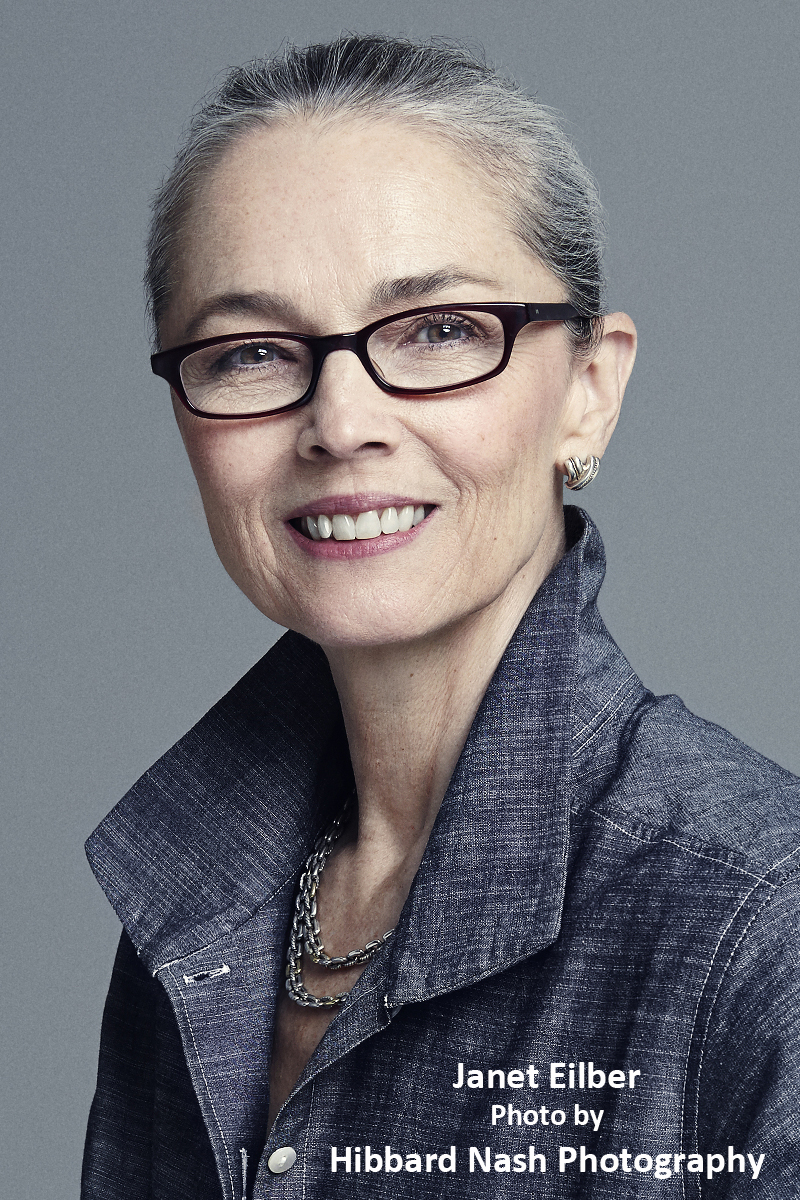
The works of the incomparable Martha Graham remain a must-see for modern dance aficionados. The Martha Graham Dance Company's latest work IMMEDIATE TRAGEDY will premiere online Friday, June 19 at 4pm (PDT)/7pm (EDT) on The Soraya Facebook page. Followers of Martha Graham will probably recognize the title IMMEDIATE TRAGEDY as Martha Graham's solo piece she performed in 1937. In collaboration with composer Christopher Rountree and his musical ensemble Wild Up, Janet Eilber (Martha Graham Dance Company's Artistic Director) has re-choreographed this historical solo into a number for fourteen dancers with the creative help of the fourteen dancers, all working from their perspective homes.
Janet most graciously spared some time to be socially distant interviewed.
Thank you for taking time for this interview, Janet!
I've always used Martha Graham as the ultimate example of one who's ageless with a fit and limber body. What creative routines have you been utilizing in your home to stay physically fit and mentally sane?
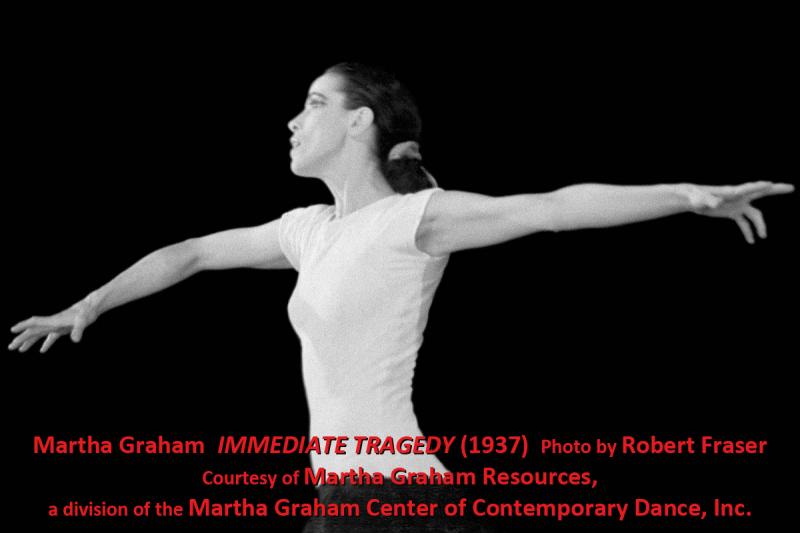 The Graham Company has had to pivot from being live in the studio and on stage to being completely digital. This artistic seismic shift has been all consuming, and it's been a huge challenge to find ways to step away from the screen. Exercise is one of the few options, and more important now than ever. I do a series of in-home stretches and breathing exercises, and I've been walking for several miles every day. I've used this time to explore a lot of new music that was not on my radar. It's inspiring ideas for future projects.
The Graham Company has had to pivot from being live in the studio and on stage to being completely digital. This artistic seismic shift has been all consuming, and it's been a huge challenge to find ways to step away from the screen. Exercise is one of the few options, and more important now than ever. I do a series of in-home stretches and breathing exercises, and I've been walking for several miles every day. I've used this time to explore a lot of new music that was not on my radar. It's inspiring ideas for future projects.
Any challenges in adapting to collaborating with your fellow creatives virtually, instead of in person?
Yes, of course! Dance is a contact sport. We are touching, sweating, breathing heavily - none of which is safe at the moment. How to understand the essence of dance without that in-person connection has been a huge challenge. We're asking  questions like - "What is the meaning of dance when you take away the kinesthetic connection of bodies in the same space? What new elements must we lean on to replace that personal connection?"
questions like - "What is the meaning of dance when you take away the kinesthetic connection of bodies in the same space? What new elements must we lean on to replace that personal connection?"
Have you found any advantages to working virtually?
Yes, we have discovered some advantages. You can brainstorm with people from around the world without leaving your living room. You eliminate the expense of travel housing and can reach out to collaborators you may never have considered connecting with under the old system.
You and Christopher Rountree and his Wild Up have worked together since performing MARTHA GRAHAM AND AMERICAN MUSIC in May of 2017 at The Soraya 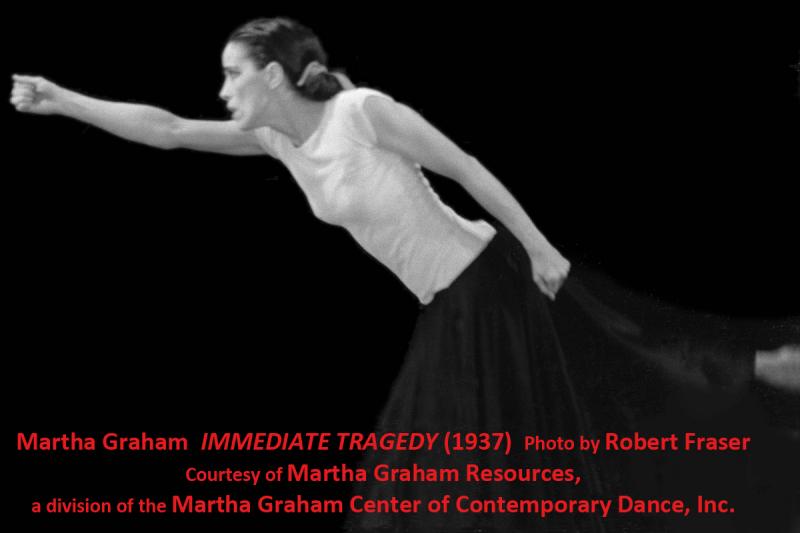 (then called the Valley Performing Arts Center). What originally brought you and Christopher together?
(then called the Valley Performing Arts Center). What originally brought you and Christopher together?
Thor Steingraber, executive director of The Soraya, is one of those brave presenters who leans into daring programming. I'm not sure most people would think of connecting the historic legacy company of Martha Graham with a young edgy music group like Wild Up, but Thor made that leap. Both organizations were testing boundaries, experimenting with expectations, and he suspected the combination would generate new possibilities.
The piece your company will be premiering June 19 is based on Martha Graham's 1937 solo piece IMMEDIATE TRAGEDY. Had you seen it performed since being in the Company?
 The original solo, IMMEDIATE TRAGEDY, which Martha premiered in 1937, is lost. It was never filmed. She danced it for a couple of years, and then it fell out of her repertoire and was forgotten. It has not been seen in over 80 years. This new digital IMMEDIATE TRAGEDY is inspired by all the ephemera that still exists of the original - photos, reviews, other writings.
The original solo, IMMEDIATE TRAGEDY, which Martha premiered in 1937, is lost. It was never filmed. She danced it for a couple of years, and then it fell out of her repertoire and was forgotten. It has not been seen in over 80 years. This new digital IMMEDIATE TRAGEDY is inspired by all the ephemera that still exists of the original - photos, reviews, other writings.
You have reconstructed this solo for fourteen dancers to be performed virtually from different cities in the U.S. and Europe. Have you worked with these fourteen before? Are they members of the Martha Graham Dance Company?
Yes! These fourteen dancers are our spectacular Company dancers. They have created the movement used in this new, digital "re-imagined" version of IMMEDIATE TRAGEDY. As part of our process to bring this dance to life, I sent each of them four different photos of Martha Graham in the original solo, and instructions to create four different phrases using the poses in the photos. Maybe the bigger challenge was that they had to film themselves doing these phrases so the material could be manipulated for the digital design. Meanwhile, the musicians were having a similar process, using technology to perform the new musical score by Chris Rountree.
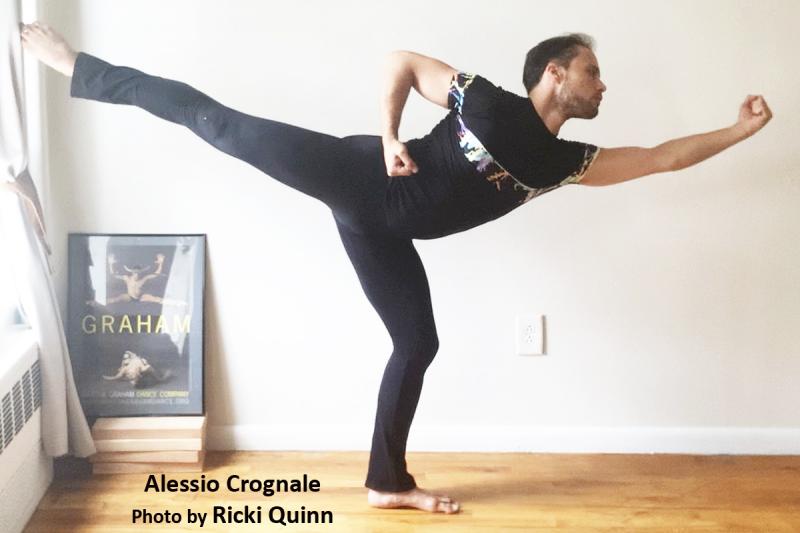 Do you know what led to author Neil Baldwin coming across the recently discovered cache (over 30 photos, musical notations, letters and reviews all relating to the 1937 solo) that spurred your interest in revisiting IMMEDIATE TRAGEDY?
Do you know what led to author Neil Baldwin coming across the recently discovered cache (over 30 photos, musical notations, letters and reviews all relating to the 1937 solo) that spurred your interest in revisiting IMMEDIATE TRAGEDY?
I've gotten to know Neil Baldwin well in the last several years because he's been researching and writing a highly-anticipated biography of Martha Graham that's about to be published by Alfred A. Knopf. The Graham archives had received a donation of never-before-seen photos by Robert Fraser of IMMEDIATE TRAGEDY, and I asked Neil if he would help with the hunt for more materials. He uncovered some remarkable stuff - including letters from Martha to the composer Henry Cowell. We've based the new IMMEDIATE TRAGEDY on a quote from one of those letters. She wrote, "I was upright and was going to remain upright at all costs." It's such a clear directive, no matter what immediate tragedy you may be facing.
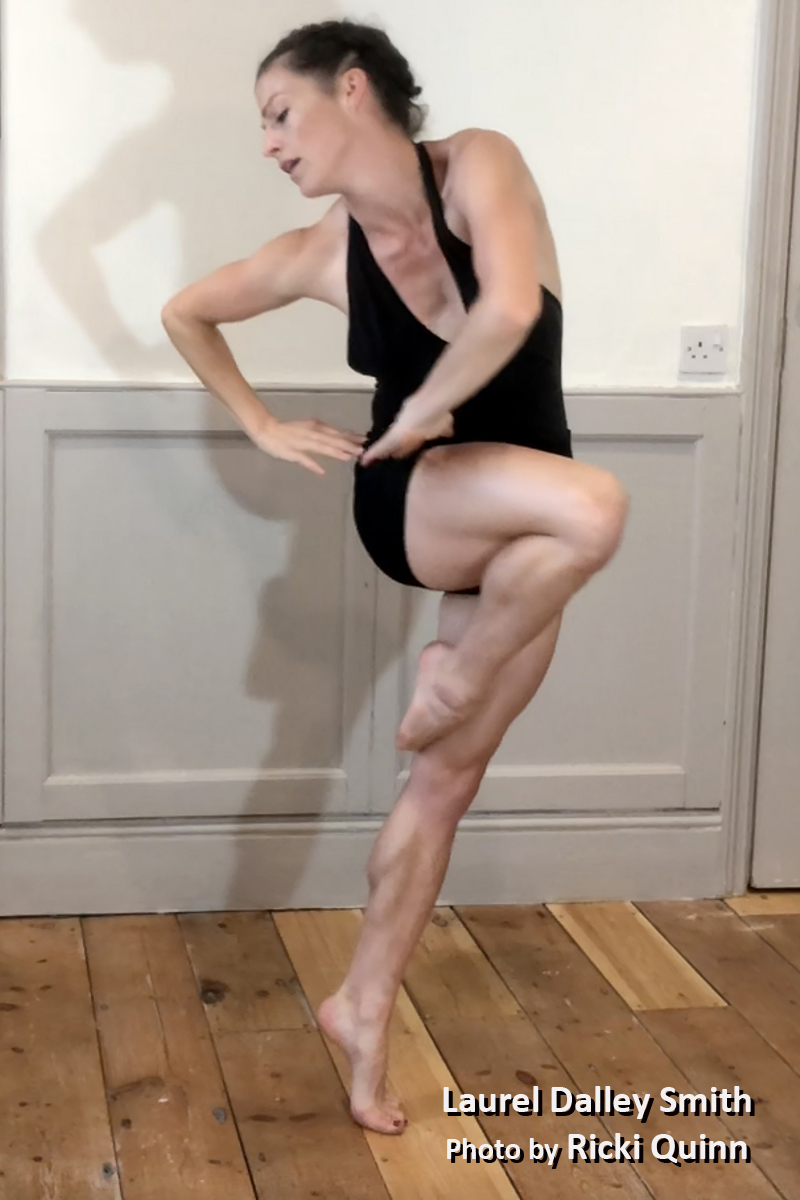 What was Martha Graham's original message and intention for IMMEDIATE TRAGEDY that you can see remains relevant to today's situations?
What was Martha Graham's original message and intention for IMMEDIATE TRAGEDY that you can see remains relevant to today's situations?
Martha was responding to the rise of fascism in Europe and the oppression of the Spanish people during the Spanish Civil War. But, as in all of Martha's greatest work, her message was so elemental to the human condition that it was not tied to any specific event. A solo about determination, force of will and the fight against limitations of any kind is appropriate in any era. We have several immediate tragedies in the world right now with which we hope our new work will resonate.
What led to you being appointed to and accepting the position of the Martha Graham Center's Artistic Director in 2005?
When my performing career led me to work in more commercial dance, theater, film and TV, I pretty quickly discovered that Martha Graham was a well-kept secret. Very, very few people in the world really knew how she had revolutionized dance - even many of the dancers and choreographers using techniques that she had pioneered! So when I accepted the job as Artistic Director, I was driven by that idea - that I needed to find new ways for audiences to discover and appreciate Martha's innovations and her incredible body of work.
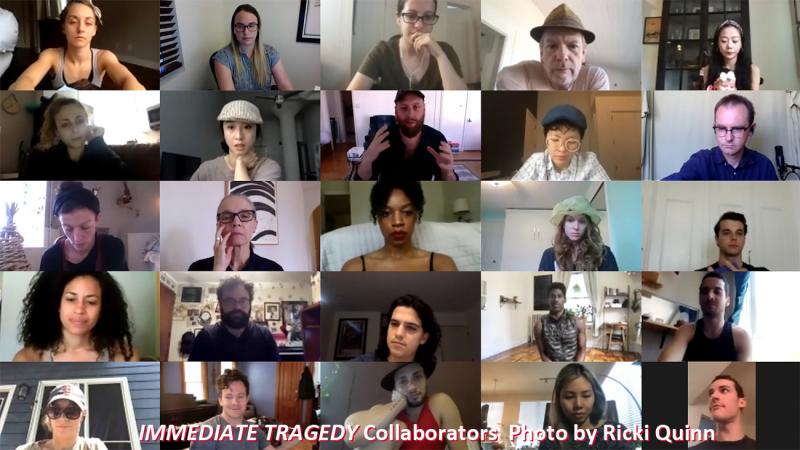 You've been partnered with or danced for many legends of the dance world. In your early career, were you ever starstruck by anyone you had to work with?
You've been partnered with or danced for many legends of the dance world. In your early career, were you ever starstruck by anyone you had to work with?
I am star-struck now when I look back! But at the time, I was too busy doing what a dancer must do - using my body, brain, heart to fulfill what was being asked by Martha Graham or Bob Fosse or Agnes DeMille. When you are inside a work of art, you are so focused on your role, what the choreographer or director is asking you to deliver, how you are connecting with the viewer, that there's no time to be starstruck.
What styles of dance did you first take classes in?
Once-a-week ballet classes in Detroit at Rose Marie Floyd's studio starting when I was six. Donna McKechnie was one of my first teachers! She was probably about 14 and helping teach the little ones.
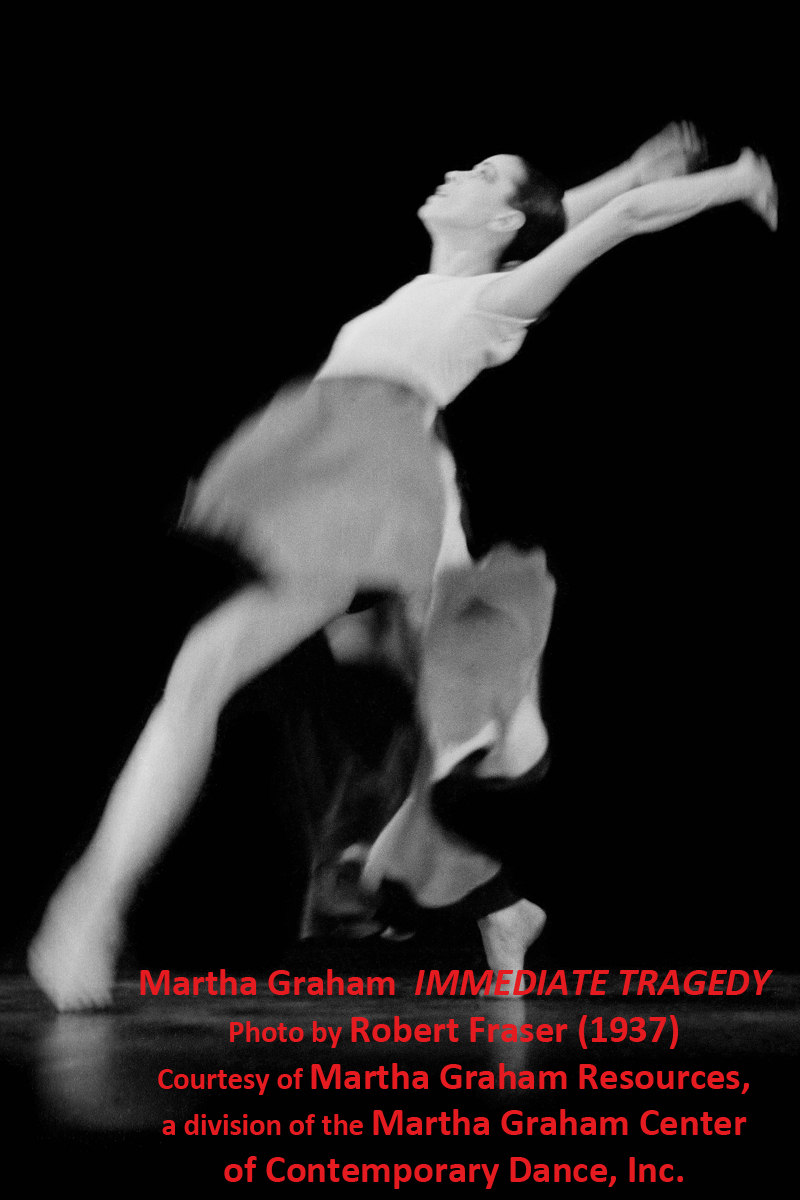 What differences, as well as, similarities have you found in the arenas of modern dance and Broadway, both which you performed in?
What differences, as well as, similarities have you found in the arenas of modern dance and Broadway, both which you performed in?
Once I figured out that Bob Fosse and Martha Graham were really asking me to do the same thing - the light bulb went off. They were both looking to reveal character through movement - and both were incredibly specific about every detail - every move, every tip of the head, lift of the shoulder. There was nothing extra. Every movement was designed to send the emotional message, and they expected you to fill those moves with personal investment. The only difference was that they used different physical vocabularies - but the process, expectations and intention was the same.
Any particular words of wisdom that Martha Graham told you that you adhere to, to this day?
She told me to get my head on straight. When I first started working with her, she immediately recognized that I had a habit of thoughtlessly tilting my head to the side as I danced. She told me in no uncertain terms that it was meaningless posing and if I wanted to be powerful onstage or anywhere else, I should start by thinking about what I was doing with my body. There's a life lesson for you.
Thank you again, Janet! I so look forward to seeing your new take on IMMEDIATE TRAGEDY.
The new digital IMMEDIATE TRAGEDY, commissioned by The Soraya, will premiere online Friday, June 19 at 4pm (PDT)/7pm (EDT) on The Soraya Facebook page, preceded by interviews with Janet Eilber and Christopher Rountree, as well as a recently filmed performance of DEEP SONG, the companion piece to the 1937 solo. IMMEDIATE TRAGEDY will then be available for viewing on the Graham Company's YouTube Channel beginning Saturday June 20 at 11:30am/2:30pm.
Comments
Videos

